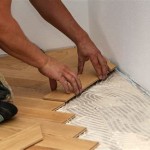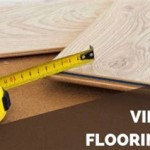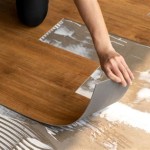Understanding the Enduring Appeal of Solid Hickory Flooring
Solid hickory flooring represents a premium choice for homeowners and construction professionals seeking durability, aesthetic appeal, and long-term value. Hickory, a North American hardwood, is renowned for its exceptional strength and distinctive grain patterns, making it a highly sought-after material for flooring applications.
The popularity of solid hickory flooring stems from a confluence of factors, including its resilience to wear and tear, its inherent beauty, and its versatility in complementing a wide range of interior design styles. This article explores the key characteristics of solid hickory flooring, examining its advantages, disadvantages, installation considerations, and maintenance requirements. A comprehensive understanding of these aspects is essential for making an informed decision about whether solid hickory flooring is the right choice for a particular project.
Exceptional Durability and Strength
One of the primary reasons for selecting solid hickory flooring is its superior durability. On the Janka hardness scale, which measures the resistance of wood to denting and wear, hickory consistently scores high, typically ranging from 1820 to 1880. This rating significantly exceeds that of many other popular hardwood flooring options, such as oak (around 1290) and maple (around 1450). The higher Janka rating translates to a floor that is less susceptible to scratches, dents, and other forms of damage from everyday use, including foot traffic, furniture movement, and pet activity. This inherent strength makes solid hickory flooring well-suited for high-traffic areas, such as living rooms, hallways, and kitchens.
The density of hickory wood contributes directly to its durability. Denser wood fibers provide greater resistance to compression and abrasion, resulting in a longer lifespan for the flooring. The tight grain structure of hickory also minimizes the absorption of moisture, which can lead to warping, cupping, or other forms of dimensional instability. While it's not entirely waterproof, hickory's resistance to moisture damage is generally higher than that of softer hardwoods. This increased stability makes it a more reliable flooring option in environments where humidity levels may fluctuate.
The longevity of solid hickory flooring is a significant advantage, offering a long-term investment that can increase the value of a property. With proper installation and maintenance, solid hickory floors can last for decades, even in demanding environments. This durability reduces the need for frequent replacement, minimizing both the financial burden and the environmental impact associated with flooring renovation.
Aesthetic Versatility and Natural Beauty
Beyond its practical advantages, solid hickory flooring is also prized for its aesthetic appeal. The wood's natural grain patterns are highly variable, ranging from straight and uniform to wildly figured with knots and mineral streaks. This diversity provides a wide range of visual options, allowing homeowners to select flooring that complements their specific design preferences. The natural color of hickory also varies, typically ranging from creamy white to light brown, with occasional reddish-brown heartwood. This color variation adds warmth and character to a space, creating a welcoming and inviting atmosphere.
The versatility of solid hickory flooring extends to its compatibility with various stains and finishes. Hickory readily accepts different stains, allowing homeowners to customize the color of the floor to match their existing décor or create a specific aesthetic effect. Lighter stains can enhance the natural beauty of the wood grain, while darker stains can create a more dramatic and sophisticated look. Similarly, a variety of finishes can be applied to solid hickory flooring, including matte, satin, semi-gloss, and high-gloss options. The choice of finish can significantly impact the overall appearance of the floor, as well as its resistance to wear and tear.
The natural beauty of solid hickory flooring can enhance the value and appeal of a home. The wood's unique grain patterns and color variations create a sense of individuality and character, making each floor a one-of-a-kind feature. The warmth and richness of hickory can complement a wide range of interior design styles, from rustic and traditional to modern and contemporary.
Installation Considerations and Maintenance Requirements
The installation of solid hickory flooring requires specialized skills and knowledge. Due to the inherent properties of solid wood, it's crucial to acclimate the flooring to the environment in which it will be installed. This process involves allowing the wood to adjust to the temperature and humidity levels of the space for several days before installation. Proper acclimation minimizes the risk of expansion or contraction after installation, which can lead to gaps, buckling, or other problems.
Solid hickory flooring is typically installed using a nail-down or glue-down method. The nail-down method involves securing the flooring planks to the subfloor using nails or staples. This method is generally preferred for wood subfloors, as it allows for some degree of movement and flexibility. The glue-down method involves adhering the flooring planks directly to the subfloor using a specialized adhesive. This method is often used for concrete subfloors, as it provides a more stable and secure bond. Regardless of the installation method, it's essential to ensure that the subfloor is clean, level, and structurally sound before proceeding.
Maintaining solid hickory flooring requires regular cleaning and occasional refinishing. Regular sweeping or vacuuming is essential to remove dirt and debris that can scratch or dull the finish. Damp mopping with a mild detergent solution is also necessary to remove stains and spills. However, it's important to avoid excessive moisture, as this can damage the wood. Applying a protective coating of wax or polyurethane every few years can help to maintain the floor's appearance and protect it from wear and tear.
Refinishing solid hickory flooring can restore its original beauty and extend its lifespan. Refinishing involves sanding down the existing finish to remove scratches, dents, and other imperfections. The floor is then stained (if desired) and sealed with a new finish. Refinishing solid hickory flooring can be a cost-effective way to revitalize a worn-out floor and give it a fresh new look.
While solid hickory flooring offers numerous benefits, it's important to consider potential drawbacks before making a decision. The cost of solid hickory flooring can be higher than that of other flooring options, such as laminate or vinyl. The installation of solid hickory flooring can also be more complex and time-consuming, requiring specialized skills and equipment. Solid hickory flooring is also susceptible to moisture damage, although it is more resistant than softer woods, and may not be suitable for areas with high humidity or frequent spills. It is also a natural product and will expand and contract based on the amount of humidity present, gaps can form and close as the seasons change.
Ultimately, the decision of whether to install solid hickory flooring depends on individual needs, preferences, and budget. By carefully considering the advantages and disadvantages of this material, homeowners can make an informed decision that will enhance the value and beauty of their homes for years to come.
The initial financial investment in solid hickory flooring is often offset by its long-term durability and minimal need for replacement. Furthermore, the unique aesthetic value adds to the overall property worth. The combination of resilience, aesthetics, and potential for increased property value makes solid hickory flooring a worthy consideration for those prioritizing quality and longevity.
Properly installed and maintained solid hickory flooring transcends mere functional utility; it becomes an integral design feature. Its capacity to accommodate various stains and finishes allows for a high degree of customization, seamlessly blending with the existing interior design while simultaneously introducing a touch of natural elegance.

Bellawood 3 4 In Natural Hickory Solid Hardwood Flooring 25 Wide Ll

Mayflower 3 4 In Millrun Hickory Solid Hardwood Flooring 25 Wide Ll

Bruce Hickory Country Natural 3 4 In Thick X 2 1 Wide Varying Length Solid Hardwood Flooring 20 Sq Ft Case Ahs601 The Home Depot

Bellawood 3 4 In Natural Hickory Solid Hardwood Flooring Wide Ll

Discount 6 X 3 4 Hickory Character Natural Prefinished Solid Hardwood Flooring By Hurst Hardwoods

Amarosa Natural Hickory Divineflooring

Blue Ridge Hardwood Flooring Hickory Natural 3 4 In Thick X 5 Wide Random Length Solid 20 Sqft Case 21075 The Home Depot

Hand Sc Natural Hickory Flooring Hardwood Bargains Www Hardwoodbargains Com 234 Html

Pros And Cons Of American Hickory Flooring Floorset

Design Considerations For A Wide Plank Hickory Floor Carlisle Floors
Related Posts








